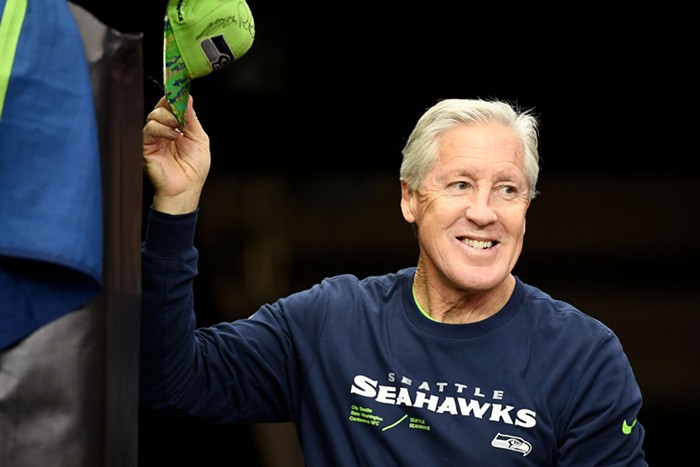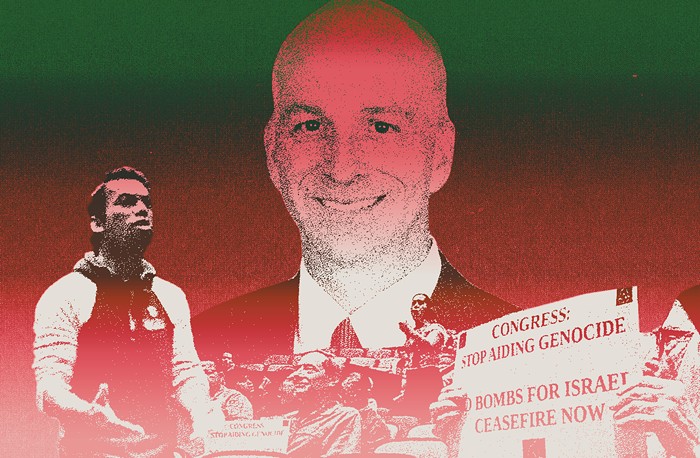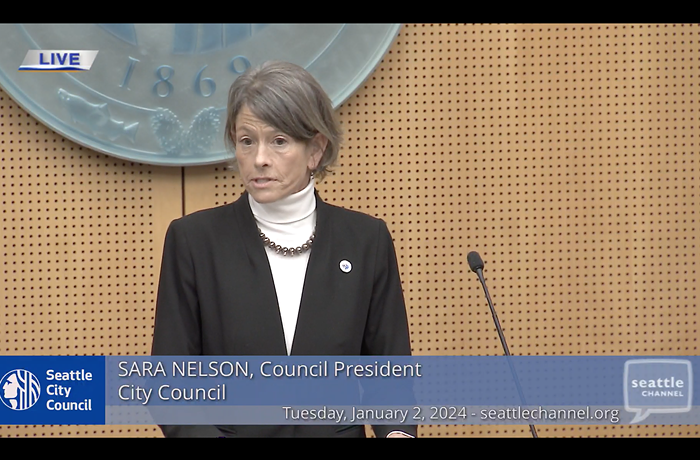When the 1987 National Football League player strike prompted team bosses to search for scab replacement players, Pete Carroll answered the call of duty by nearly crossing the picket line. Then an assistant coach with the Minnesota Vikings, Carroll prepared to usurp the job of starting quarterback by displaying the same energy and enthusiasm for which he later became famous: “I went home and took snaps until after midnight in the cul de sac, trying to get ready to go.” The Vikings eventually found better scab options–Scab Pete never had to play a game. But it wouldn’t be the last time his career exemplified the competition between labor and capital.
Hardened by his experience as a vagabond NFL assistant and eventual two-time National Championship winner at the University of Southern California, Carroll concretized a cutting-edge managerial philosophy upon after arriving in Seattle in 2010. As America recovered from the 2008 recession with the underpaid labor of Millennial tech and freelance workers, Pete Carroll’s 2010 book Win Forever: Live, Work, and Play Like a Champion became popular fodder for America’s managerial class. An NFL reporter described the environment fostered by Coach Carroll in Seattle as “refreshing and progressive,” like a Silicon Valley startup. Tech mogul and Seahawks owner Paul Allen praised Carroll for going “far beyond what makes a great football coach.” Back in 1987, Coach Pete nearly became Minnesota’s scab quarterback; almost a strikebreaker, he was now a pathbreaker of twenty-first century capitalism.
The peak of Pete Carroll’s 14-year run as Seahawks Head Coach and Director of Player Personnel came from 2012-2016, when the Seahawks made five straight playoff appearances, won the NFC West twice, captured two conference titles, and won a Super Bowl. It was a triumph of managerial savvy, with Carroll and his front office making the most of the cheap rookie contracts to which stars like Russell Wilson, Richard Sherman, and Earl Thomas were signed, allowing Seattle to spend money elsewhere on impact free agents like Michael Bennett and Cliff Avril. For reasons that had more to do with the cost of labor than with Super Bowl curses, Coach Pete’s Seahawks would never see these heights again.
Just as the liberal view of American history tends to emphasize vague notions of region and group psychology over material root causes, many sports fans believe their teams are subject to invisible forces outside of their control. In point of fact, the price and migration of labor determines both our sports and our politics. The consensus narrative of Seattle’s relative decline from the days of annual division championships and deep playoff runs tends towards the metaphysical: the calamitous ending to Super Bowl XLIX against the New England Patriots, in which Carroll called for an ill-fated pass play that was intercepted at the goal line, cast a pall over the team that never lifted. In actuality, the real reasons for Seattle’s stagnation were chiefly material.
From 2017 to 2023, the Seahawks were unable to manage big new contracts for star players whose cheap rookie deals had expired. As Pete Carroll aged into the NFL establishment and lost tabs on standout high school and college talent, Seattle also had less luck finding inexpensive labor in the draft. As a result, the Seahawks fell behind competitors who enjoyed the material advantages that Seattle once possessed. Carroll’s good-vibes boss schtick couldn’t conceal the financial pressures that tugged at the fabric of his team.
Contrary to the popular narrative about their post-Super Bowl demise, the competitive fiber of the Seahawks remained intact for the duration of Carroll’s time in Seattle–a major credit to Coach Pete’s tenacity. The Seahawks kept scrapping, squeaking out one-off first round playoff wins here and there; but after they ascended the ranks of the sport because of their mastery of the exploitative machinery of NFL labor-management relations, the brutal materialism of the sport caused their decline.
After a brilliant start, the waning years of Carroll’s Seattle tenure succumbed to the cash imperatives of sports capitalism, where players must maximize their earning potential before inevitable injury. During a 2017 regular season game in Arizona, stud defensive backs Richard Sherman and Kam Chancellor suffered devastating injuries, leading to their respective departures from Seattle. A year later, safety Earl Thomas severely fractured his leg while in a contract dispute with the Seahawks front office; as he was carted off the field, Thomas gave Coach Pete the middle-finger. Then, Carroll’s relationship with star quarterback Russell Wilson gradually soured, in large part because the beleaguered quarterback was tired of being pummeled behind a shaky offensive line. Once a budding dynasty, Coach Pete’s Seahawks became one more dysfunctional late capitalist workplace with disgruntled Millennials squaring off against Boomer management for stronger worker protections and better pay.
Carroll’s tenure in Seattle was a microcosm of progressivism’s inability to reconcile the contradictions inherent to capitalism. A fun work environment could never paper over class conflict between white collar coaches who remain out of harm’s way and blue collar players who risk their health. Nor could the spectacle of interracial harmony between a white coach and a Black quarterback cause the latter to overlook the occupational hazard of CTE.
At his exit press conference last week, Coach Pete, once an aspiring scab, waxed poetic about the power of labor; about his belief that “the NFL is all about the players.” In the end, the legacy he left behind in Seattle was that of the most fun boss ever–but of a boss, nonetheless.
Shaun Scott is a writer and organizer. His book, Heartbreak City: Seattle Sports and the Unmet Promise of Urban Progress (UW Press 2023), is available wherever books are sold.



















